HISTORY OF ZEN BUDDHISM


History. Zen Buddhism was brought to China by the Indian monk Bodhidharma in the 6th century CE. ... Zen spread to Korea in the 7th century CE and to Japan in the 12th century CE. It was popularized in the West by the Japanese scholar Daisetz Teitaro Suzuki (1870 - 1966); although it was found in the West before that.Oct 2, 2545 BE
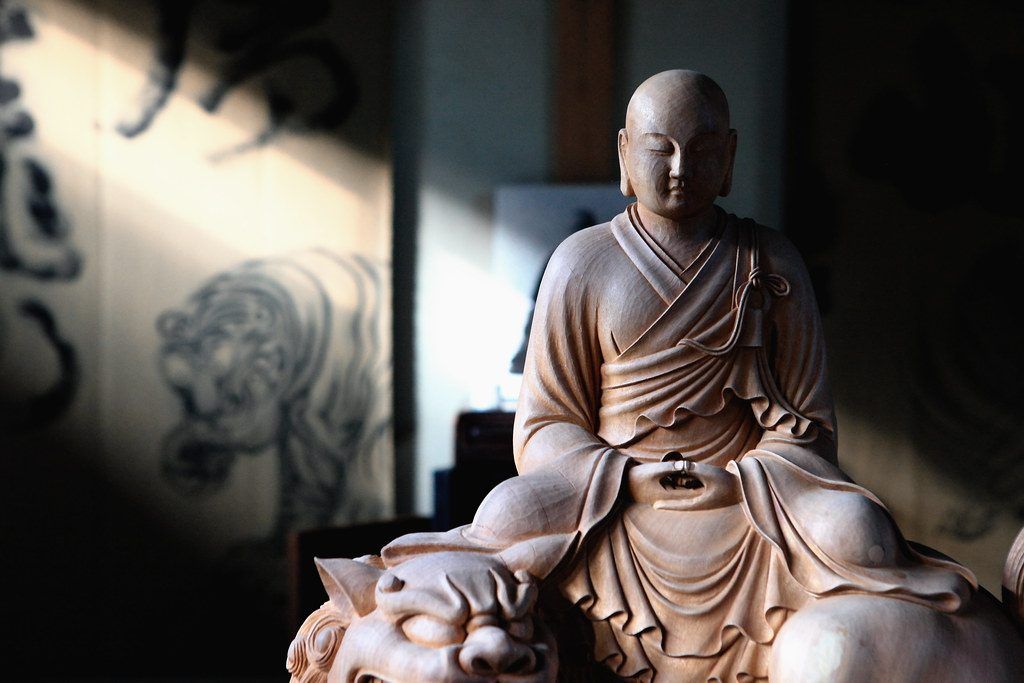
Zen grew from the experience of Shakyamuni Buddha, who realized awakening in the posture of Dhyana ( zazen, Zen meditation) in India in the 5th century BCE. This experience has since been transmitted uninterrupted, from master to disciple, creating the Zen lineage.
After it had been established in India for almost 1000 years, the monk Bodhidharma took the teaching to China, in the 5th century CE, under the name of ch’an, where it spread widely throughout the country, having found there a favorable ground for its growth. It is above all during this period that it affirmed its originality, its simplicity and the purity of its practice.
In the 13th century, the Japanese monk Dogen, after a stay in China, brought Soto Zen to Japan. The founder of our school, Master Dogen is also considered one of the great Buddhist philosophers. Zen would influence the whole of Japanese culture very profoundly. In that country, more than 20, 000 temples bear witness today to a remarkable diffusion. In the 20th century, the West started to become interested in Zen as a philosophy, whilst at the same time in Japan, Master Kodo Sawaki, who was part of a reformist current in Zen, reinvigorated the practice of sitting, in particular outside temples. At the end of the 60s, it was one of his successors, Taisen Deshimaru, who would bring the essence of these teachings to Europe, as Bodhidharma did to China, 1,500 years before.
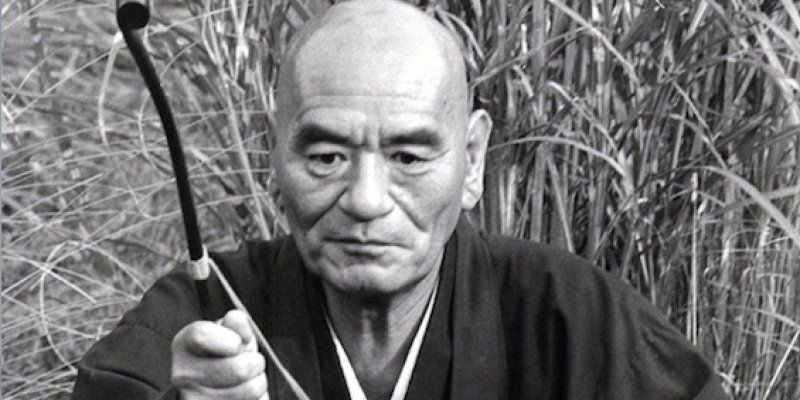
Manjusri’s Life-Giving Sword
At the Rochester Zen Center, as well as at many Zen temples in Japan and China, few tools of sesshin are more helpful than the kyosaku, or encouragement stick. As an aid to concentration it was widely used in China long before Zen was transplanted from there to Japan, and it may go back even further. As mentioned in The Three Pillars of Zen, it is “probably a hardier descendant of a small rod used even in the Buddha’s day to awaken dozing monks, and constructed so as to whistle when shaken beside the ears.”
Books that indiscriminately criticize the use of the stick as punitive – usually written by authors with no real experience in Zen training – reveal a lack of understanding of the spirit in which it is used. That spirit is called up most forcefully in sesshin, which involves not only ten or more hours of daily sitting but an extraordinary intensification of effort. Such sitting generates joriki, the psychic energy that grows out of intense mental absorption. Strenuous sitting builds joriki by focusing and conserving energies that would otherwise be dispersed through aimless thinking. Still, as with any other human effort, sitting cannot be sustained at peak intensity, and periods of drowsiness and mental stagnation are inevitable. This is where the stick comes in, one of our chief allies in the battle against “the demon of sleep,” as Zen master Hakuin called it. The specific points on the shoulders where we are struck are on an acupuncture meridian connected to the lower belly (hara or tanden in Japanese), which when stimulated liberates psychic energy.
Our policy in sesshin is that no one is to ask for the stick; it is used only at the discretion of the monitors, who try to apply it with the force, tempo and frequency best suited to each individual. When we switched to this practice after years in which participants had to request the stick (with hands raised palm-to-palm) every time they wanted it, sesshins acquired a whole new degree of power. The new policy eliminated the need to consider, every time the monitors came around with the stick, “Should I ask for it or not?” This decision easily trips an upsurge of self-referential thoughts, such as what requesting it (or not) says about us, that interferes with pure absorption in the breath or koan. Once participants were relieved of the burden of choosing, and of the self-concerns involved in it, everything became simpler for them. They could leave the decision-making to the monitors and focus on the single matter before them. By relinquishing control, they could open themselves to a power greater than themselves. Sitter, monitor, and stick were working together as one.
Zen speaks of “the hen tapping from the outside while the chick pecks from the inside.” Though this generally refers to the teacher-student dynamic, it may also be seen as the collaboration that occurs between monitor and sitter. At best, the monitor and sitter are in a kind of communion in which each responds to the other’s exertions. It is a joint effort with the mutual respect and feelings of intimacy that grow out of their shared purpose. The openness implicit in the rows of backs turned outward inspires in the monitors a sense of sharing in a sacred trust. Sitters who can respond to the stick with the same trust can find themselves with a heightened charge in penetrating “Dharma gates beyond measure.”
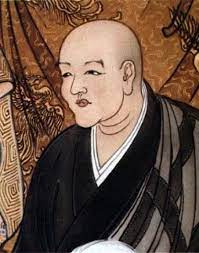
Beginners often think that the energy transfusion that comes from the stick is primarily meant to lift sitters out of drowsiness. But the stick is used on most people to neutralize a far more intractable obstacle: thoughts. Besides the run-of-the-mill random thoughts that flit in and out of the mind so much of the time, there are stubborn conceptual illusions to contend with. One of the most vexing of these, which crops up most often late in sesshin, is the sense of being increasingly divided within oneself between subject and object, observer and observed. Sometimes this comes with a voice-over – the kibitzing mind that won’t be silenced.
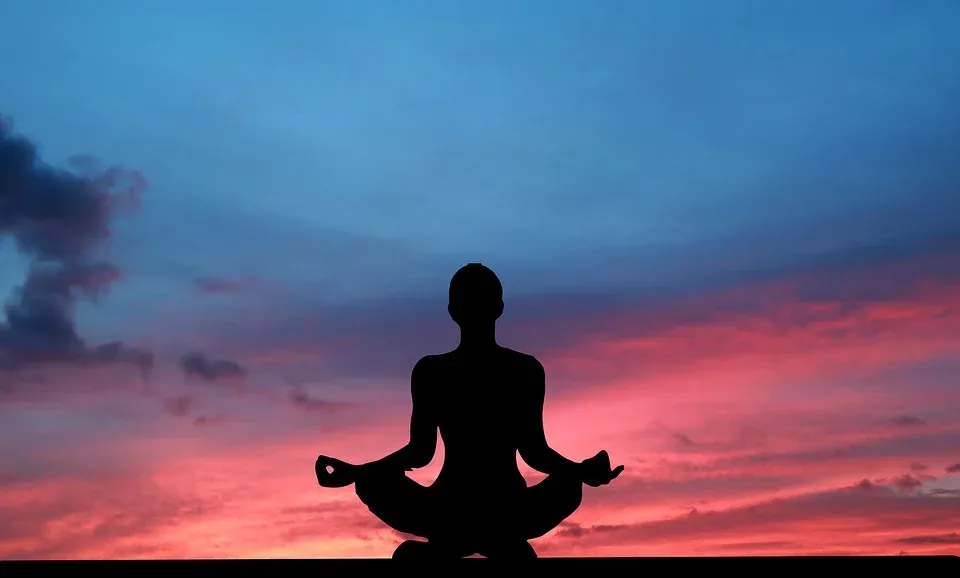
We may also come to feel as though caught in a gridlock of thoughts, in which it seems impossible to either advance or retreat. A brisk strike of the stick can give us the burst of energy needed to break out of such mental impasses. In this sense the stick becomes the sword of Manjusri, the Bodhisattva of Wisdom, a sword which when wielded by the monitors no-mindedly can do much to sunder the bonds that obstruct the sitter. Once delusive thoughts have settled, the transcendental wisdom with which we are all endowed, represented by Manjusri, stands revealed. Manjusri in the form of monitor helps liberate the Manjusri in each of us.
In addition to persistent thoughts, almost any form of makyo is more likely to break up through the compassionate use of the stick: fantasies, illusory sensations, hallucinations, and obstructive psychological states. By focusing the power of mind the stick may, for example, enable us to see the insubstantiality of fear, and to work through even lifelong fear.
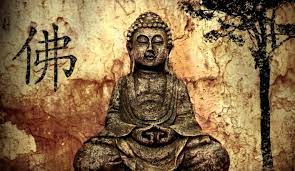
The stick may be applied to rouse a sleepy sitter, enliven a weary one, or spur on one who is striving hard, but under no circumstances is it used as punishment or out of any sense of ill will. Every strike of the stick is an affirmation of faith in the sitter. Each “Whack, whack! Whack, whack!” may be heard as, “The energy of the whole universe is yours!
You can go further, deeper! You, too, can realize your innate perfection!”
The stick, then, is nothing less than a means of focusing the energy and force of the monitors and the sesshin as a whole and transferring it to each sitter. Seen this way, the use of the stick is an act of true compassion. Most monitors, it seems, would welcome the chance to sit through full rounds of zazen without having to get up to use the stick (and the irony is not lost on them that it wasn’t until they reached this level of ease while sitting that they were assigned monitoring duties). Sesshin participants turn a corner in their practice when they realize what a service the monitors are providing, and that, along with their teacher, they are their closest allies.
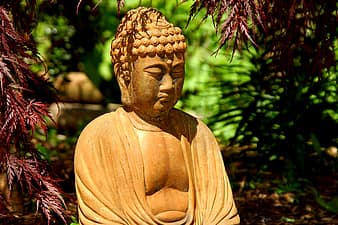
THINGS YOU MAY NOT KNOW: Zen Buddhism has had a long and varied history in several different Far Eastern cultures. Each culture has produced a tradition that is recognizable as Zen, but differs slightly from all the others. Vietnamese Zen is the one most influenced by the Theravada tradition. It tends to be gentle in expression and method, to emphasize purity and carefulness, and to combine Zen with some Theravada teaching and methodology.
THINGS YOU MAY WANT TO SAVE: Zen Buddhism in Katmandu. Simple explanation of Zen is a Japanese word translated from the Chinese word Chán, which means "meditation". Zen uses meditation to help practitioners go beyond simply thinking about Zen. The goal in Zen is to attain satori. This Japanese word translates as "enlightenment". The practice also includes using riddles, called Koans.
ZENTRAVELER SAYS: When you are fully trained in Zen Buddhism even the shadow of the hickory stick will keep you in line.
From here to Infinity is a relatively short ride! The next leg takes eons and eons as you fly through the Barycentric Dynamical Time Zone! …and on and on and on. Follow the Zentraveler Newsletter often for Travel, Health and Zen-like stories and such. Where else can you get a three in one Newsletter For The Price of FREE?

ZENTRAVELER IS A PERSONAL NEWSLETTER, DESIGNED TO GIVE TRAVEL, HEALTH, WRITING AND HUMOR INCLUDING HELPFUL HINTS WITH A ZEN LIKE QUALITY



